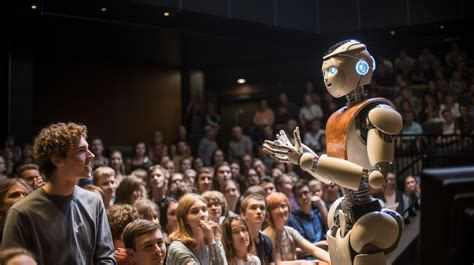In the rapidly evolving landscape of education, instructors continually seek innovative methods to enhance their teaching practices and engage students more effectively. Jeremy Caplan, Director of Teaching and Learning at CUNY’s Newmark Graduate School of Journalism, has embraced artificial intelligence (AI) as a transformative tool in course design. By integrating AI into his workflow, Caplan has expanded his pedagogical possibilities and reclaimed valuable time for direct student interaction.
Enhancing Syllabus Development with AI
Crafting a comprehensive and relatable syllabus is foundational to effective teaching. Caplan employs AI to refine his syllabi by focusing on three core elements, encapsulated in the acronym RIL:
• Relevancy, Relatability, and Rationale (R): Ensuring the course content is pertinent and accessible to students.
• Inspiration (I): Infusing the syllabus with elements that motivate and engage learners.
• Learning Outcomes (L): Defining precise and measurable objectives to help students track their progress.
To achieve this, Caplan inputs his existing syllabus into ChatGPT with a detailed prompt, requesting analysis from both a student’s and an educator’s perspective. The AI provides actionable feedback, highlighting potential areas of confusion, suggesting additional sections, recommending visual enhancements, and offering general improvement ideas. This collaborative process enables Caplan to identify content gaps and refine his syllabus to better support diverse student needs.
Structuring Class Sessions with AI Assistance
Beyond syllabus development, Caplan leverages AI to design individual class sessions that are both informative and engaging. He prompts ChatGPT to outline a session plan, specifying the topic, desired learning outcomes, and preferred teaching methods. The AI-generated session plan includes a structured timeline, recommended activities, discussion questions, and assessment methods. This approach allows Caplan to explore a variety of instructional strategies and select those that best align with his teaching objectives and student learning styles.
Designing Interactive Activities through AI Collaboration
Interactive activities are crucial for deepening student understanding and fostering active learning. Caplan utilizes AI to brainstorm and develop activities that resonate with his students. By providing ChatGPT with context about the course content and learning goals, he receives tailored suggestions for group projects, case studies, simulations, and other hands-on learning experiences. These AI-generated ideas serve as a springboard for Caplan to create dynamic and relevant activities that enhance student engagement and application of knowledge.
Reclaiming Time for Student Engagement
One of the most significant benefits Caplan has experienced through integrating AI into his course design is the reallocation of time. By automating aspects of planning and content creation, he reduces the time spent on administrative tasks. This efficiency gain allows him to dedicate more time to direct interactions with students, such as one-on-one consultations and group discussions. As Caplan notes, this shift brings him “a little closer to those students,” fostering a more personalized and impactful educational experience.
Embracing AI as a Pedagogical Partner
Caplan’s experience demonstrates the potential of AI to serve as a valuable thought partner in education. By thoughtfully integrating AI tools like ChatGPT into course design and teaching practices, educators can enhance their creativity, improve course materials, and devote more time to meaningful student engagement. As AI continues to evolve, its role in education promises to expand, offering new avenues for innovation and collaboration in teaching and learning.
This blog post is based on insights from Jeremy Caplan’s article, “Designing courses with an AI assistant,” published on February 21, 2025. For a more in-depth exploration, you can read the original article here.

